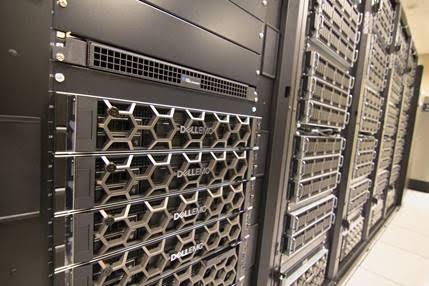Dell is doing to supercomputers what they did to PCs
The Takeaway
Dell transformed the computer industry by shrewd use of commoditization. Now they are a force in the supercomputer industry.
The details
Sometimes news is not about the event can be found buried in the details. Take this story about Ohio State University installing a new supercomputer. No news there, major research universities buy supercomputers. It is not OSU’s first supercomputer. Again, no news there. The supercomputer is built by Dell, a company best known for lowering price/performance boundaries in the PC industry. Now, that’s interesting.
Dell entered the supercomputer market with its acquisition of EMC in 2015. It was a cash-and-stock deal valued at $67 billion, and still stands today as the largest tech sector acquisition.

A glimpse of the new Pitzer Cluster supercomputer being installed at the Ohio State University Supercomputer Center. (Source: Dell EMC)
The new Pitzer Cluster — named for a co-founder of the OSU Supercomputer Center — offers higher performance in a smaller footprint than the center’s current most powerful supercomputer. That sounds like a Dell move, but everybody in the High Performance Computing (HPC) industry is working that angle too. What sets Dell apart is its ability to work with a wide range of suppliers to bring together a commoditized HPC cluster at a price point (not disclosed) that makes existing supercomputer users expand their holdings, not just replace outdated equipment.
In case you need a reminder, commoditization is the process by which goods with economic value and distinguishable attributes (such as features or brand name) become commodities in the eyes of consumers. It is this intentional push to commoditize supercomputers that makes this story more than just a bragging-rights announcement from OSU.
The theoretical peak performance of the new Dell EMC-built cluster is about 1.3 petaflops, meaning it is capable of performing 1.3 quadrillion calculations per second. In other words, to match the potential of what the Pitzer Cluster could do in just one second, a single person would have to perform one calculation every second for 41,195,394.5 years. The cluster also can achieve seven petaflops of theoretical peak performance for mixed-precision artificial intelligence workloads, according to Dell EMC.
The Pitzer Cluster is equipped with 260 compute nodes, including Dell EMC PowerEdge C6420 servers with CoolIT Systems’ Direct Contact Liquid Cooling (DCLC) coupled with PowerEdge R740 servers. In total, the cluster will include 528 Intel Xeon Gold 6148 processors, 64 Nvidia Tesla V100 Tensor Core GPUs, connected with the EDR InfiniBand network protocol.
The Pitzer Cluster will be the new third HPC system at OSU. It joins the Owens Cluster, built by Dell EMC/Intel in 2015, and the Ruby Cluster, built by HP/Intel in 2015. The Pitzer replaces the Oakley Cluster built by HP/Intel in 2012.
The CoolIT DCLC is a modular, low-pressure, rack-based cooling system which Dell says allows a “dramatic increase in rack density.” CoolIT technology is also supplying dedicated liquid cooling to each of the 528 Intel processors. The Intel CPUs offer a 50% improvement in bandwidth compared to OSU’s existing supercomputers. Mellanox EDR InfiniBand 100 Gigabit data service allows 200 million messages per second.
The Pitzer Cluster will be used by a variety of scientific research disciplines, including the creation and use of Deep Learning algorithms. Yuanfang Guan,Ph.D. is a Computational Medicine and Bioinformatics researcher from the University of Michigan who collaborates with research partners at OSU. Prof. Guan comments, “Deep learning has now become an essential tool to understand the human genome, the gene functions and their regulation to predict the likelihood of diseases. As a research group that has written many best-performing algorithms, we have often faced limitations of computational resources. The Tesla V100 Tensor Core GPUs on the Pitzer Cluster will help to advance our accuracy in the genomics and medical image areas and allow us to complete tasks that cannot otherwise be accomplished by lower tier cards.”